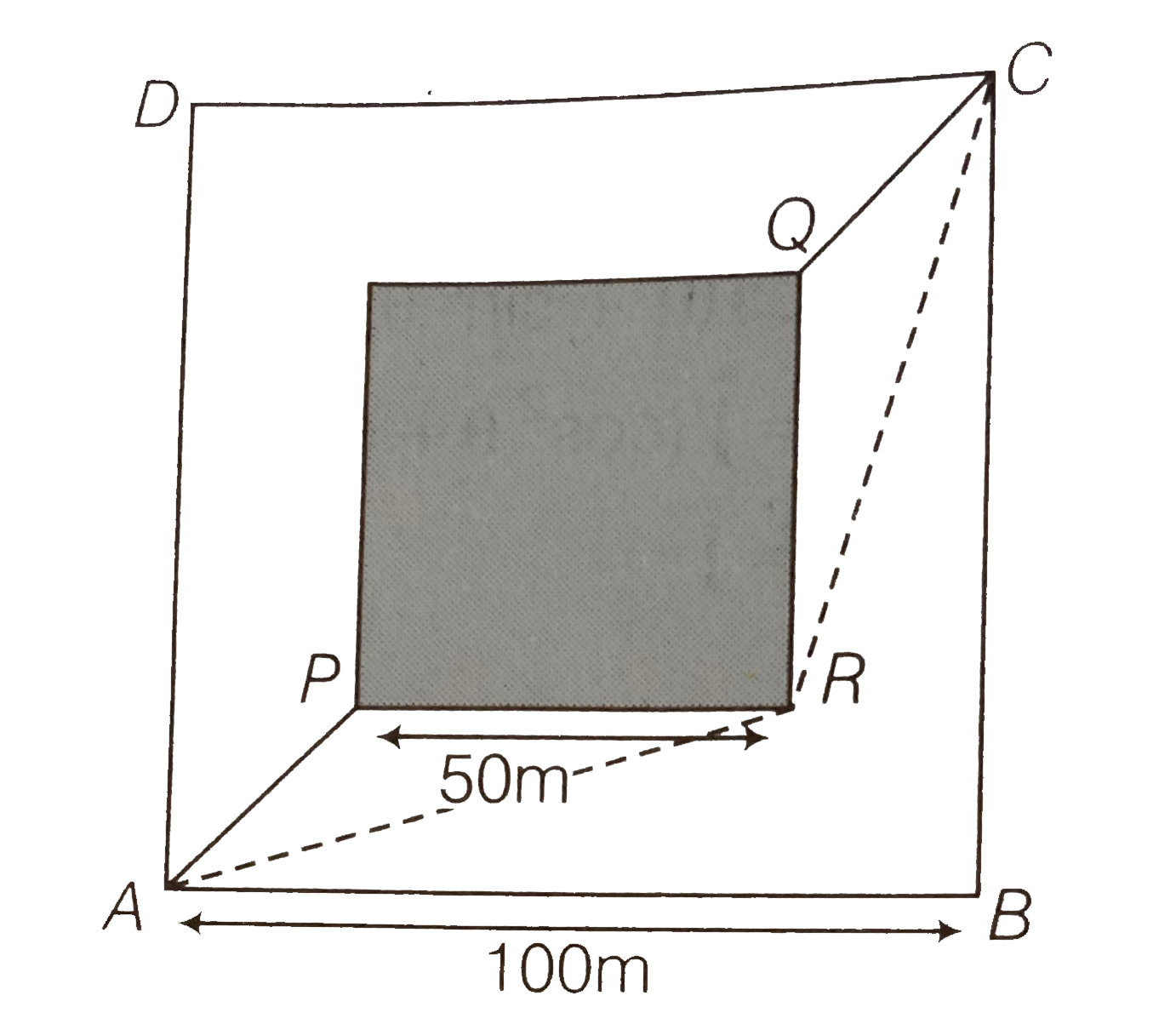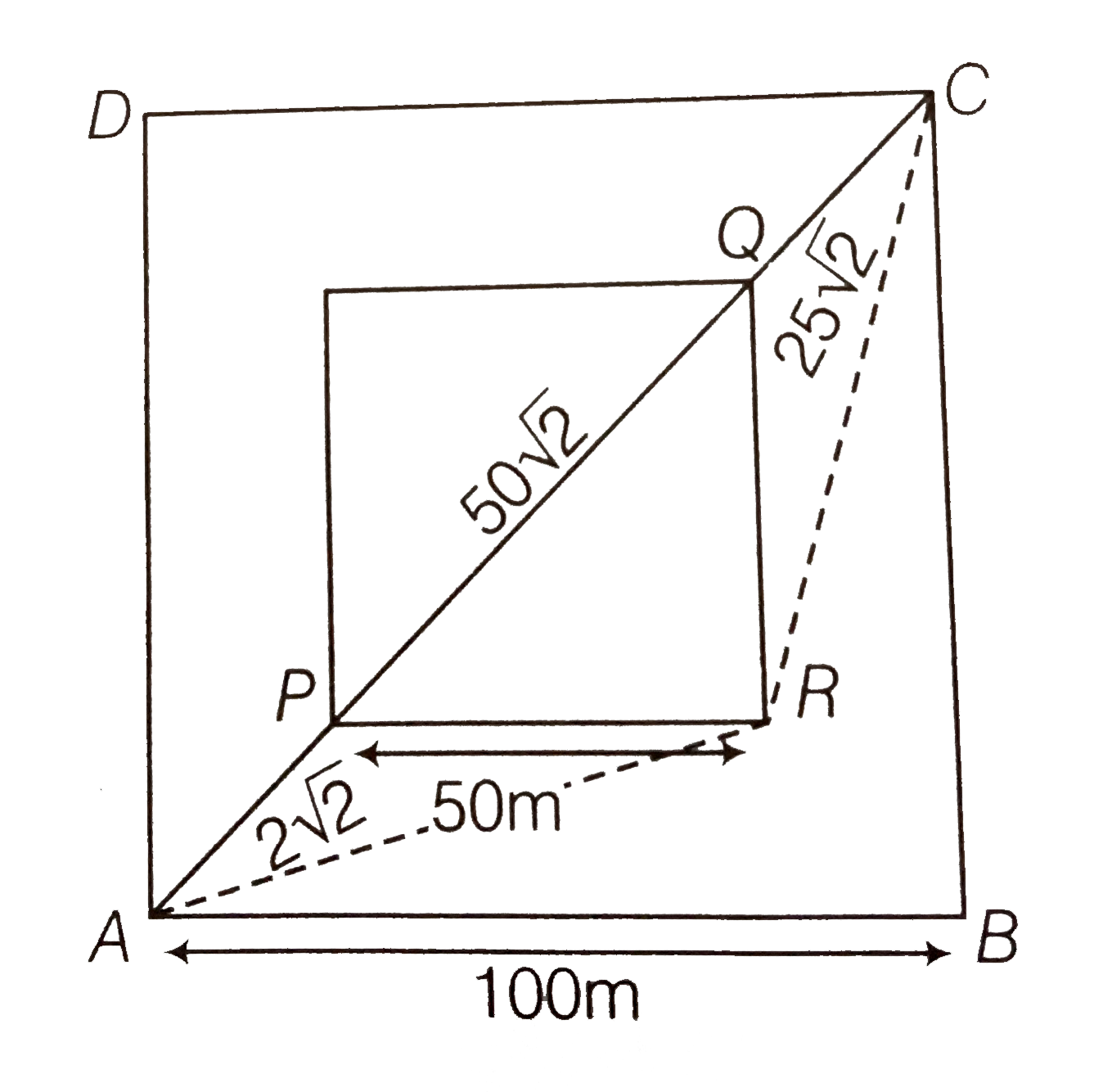A man wants to reach from A to the opposite corner of the square C. The sides of the square are 100 m. A central square of 50m×50m is filled with sand. Outside this square, he can walk at a speed 1 m/s. In the central square , he can walk only at a speed of v m/s (v<1). What is smallest value of v for which he can reach faster via a straight path through the sand than any path in the square outside the sand ?

Video Solution
Text Solution
Consider adjacent diagram

Time taken to go from A to C via straight line path APQC through the S and
Tsand=AP+QC1+PQv=25√2+25√21+50√2v
=50√2+50√2v=50√2(1v+1)
Clearly from figure the shortest path outside the sand will be ARC.
Time taken to go from A to C via this path
Toutside=AR+RC1s
Clearly AR=√752+252=√75×75+25×25
=5×5√9+1=25√10m
RC=AR=√752+252=25√10m
⇒ Toutside=2AR=2×25√10s=50√10s
For Tsand<Toutside
⇒ 50√2(1v+1)<2×25√10
⇒ 2√22(1v+1)<√10
⇒ 1v+1<2√102√2=√52×2=√5
⇒ 1v<√52×2−1⇒1v<√5−1
⇒ v<1√5−1≈0.81m/s
⇒ v<0.81m/s
|
Topper's Solved these Questions
Similar Questions
Knowledge Check
The area of a square is 1 sq. m Express the area of this square is sq. mm.
A1,00,00,000 sq mmB10,00,000 sq mmC1,00,000 sq mmD20,00,000 sq mm
Find the area of a square of side 14m.
View SolutionFind the area of a square of side 8 m.
View SolutionFind the side of the square whose perimeter is 20 m.
View SolutionFind the area of a square plot of side 8 m.
View SolutionArea of a square plot is 2304m2. Find the side of the square plot.
View SolutionFind
a. the area of a square with side 7 m.
b. the area of a square with perimeter 56 m.
View SolutionSum of the areas of two squares is 640m2 . If the difference of their perimeters is 64m, find the sides of the two squares.
View Solution
